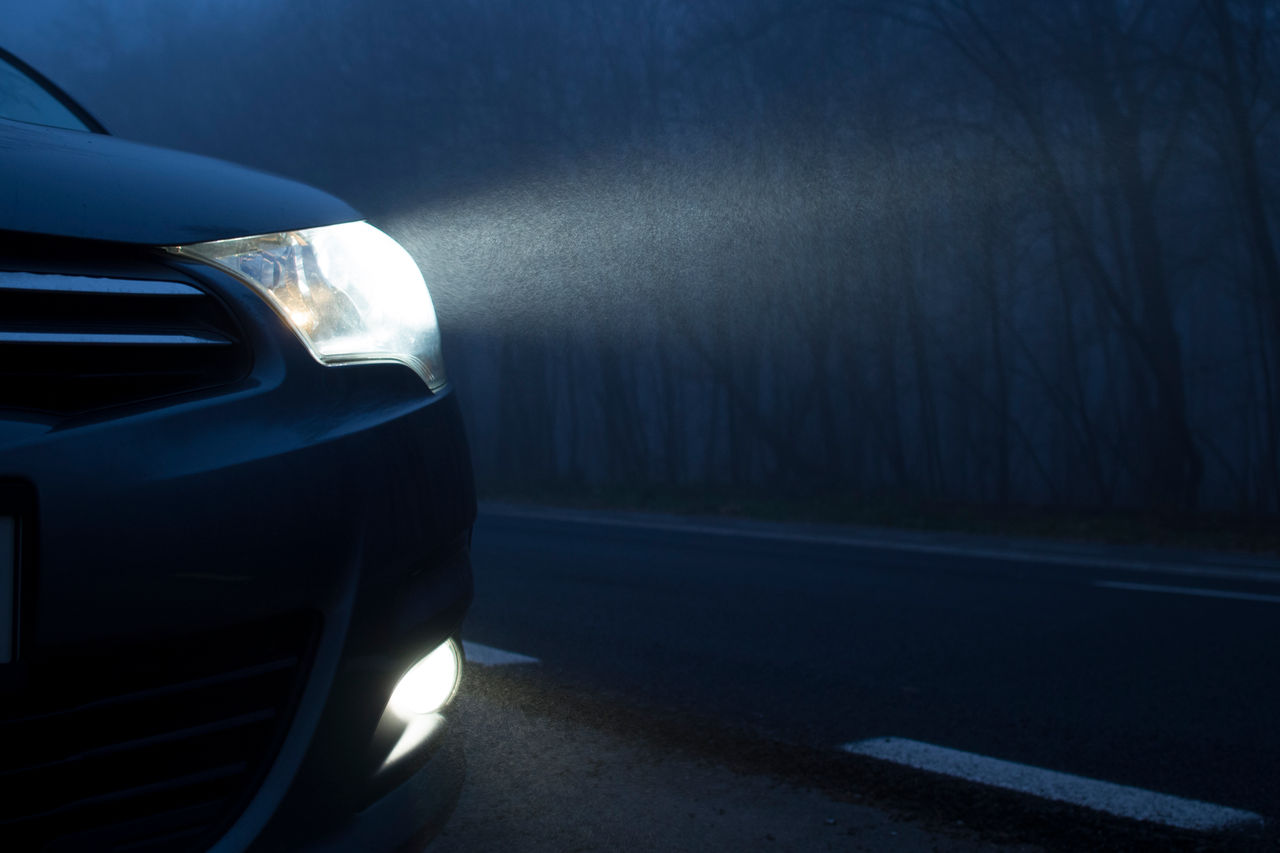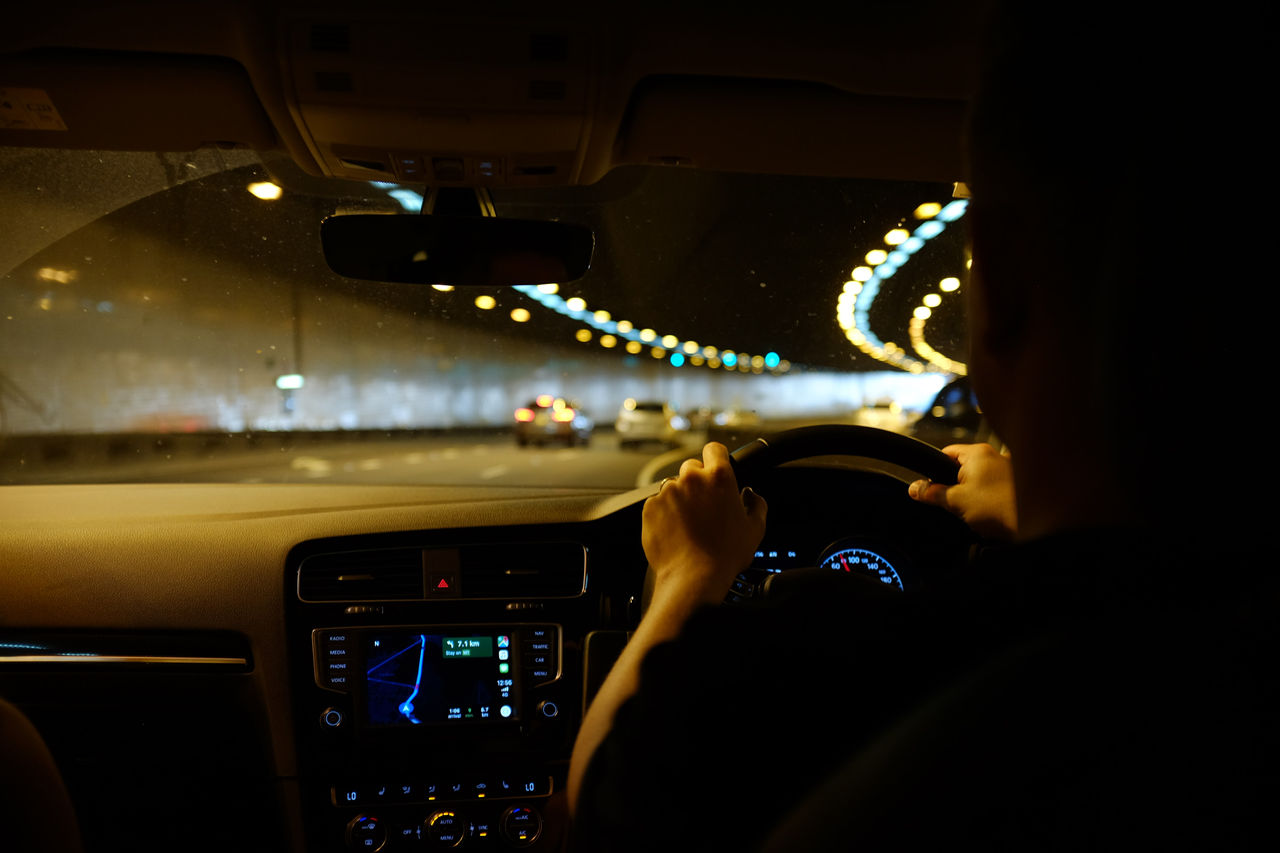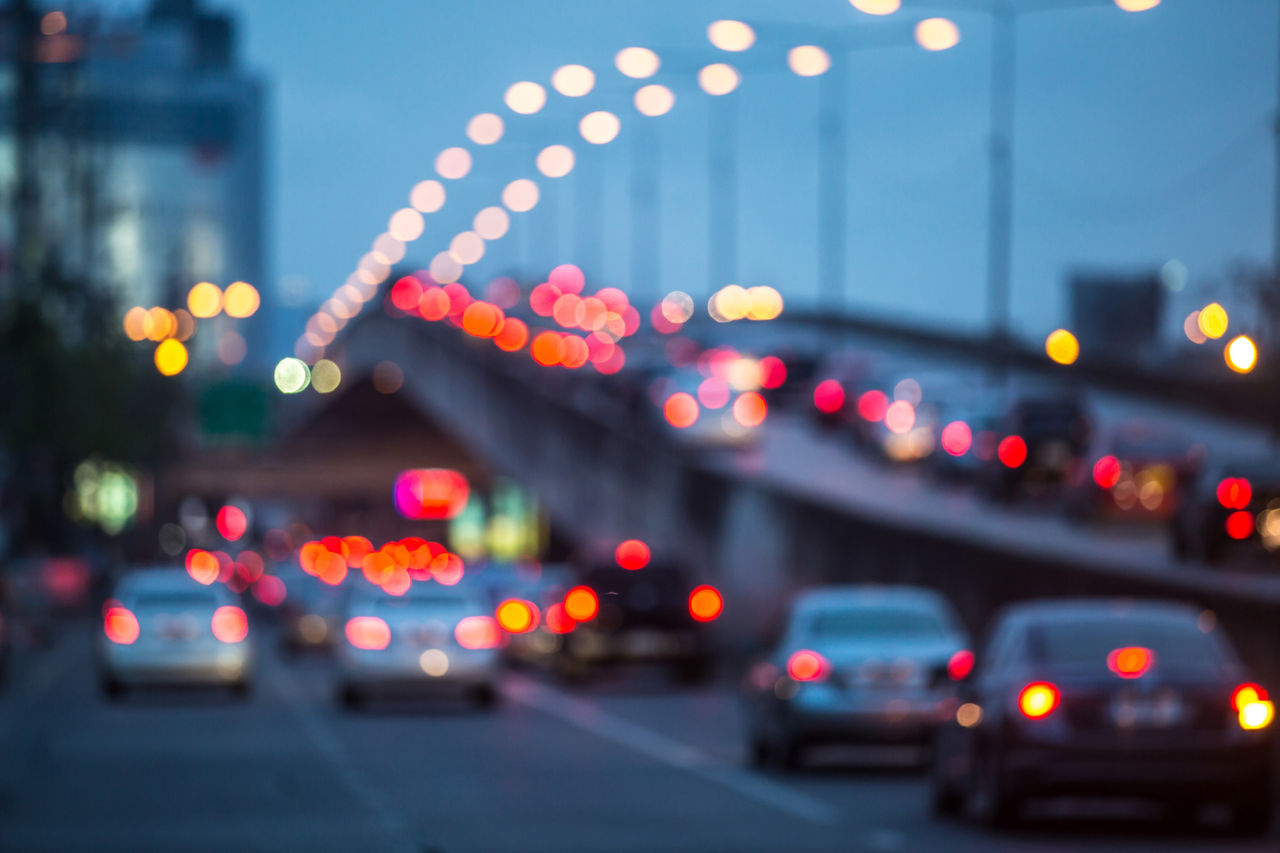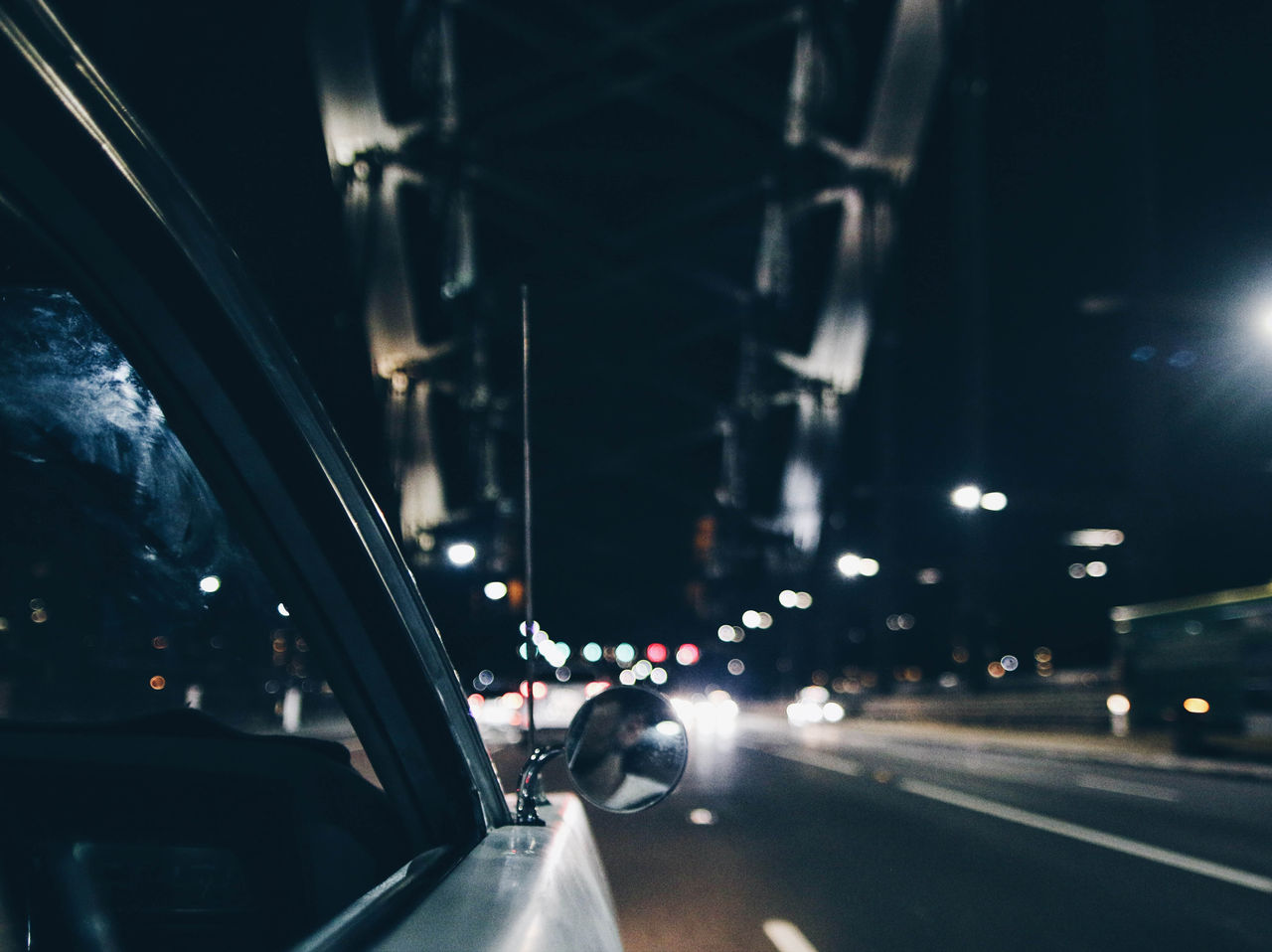Staying safe when driving in the dark
18 July 2022
Driving at night can sometimes be a challenge. Some drivers love it, but some will try and avoid doing so at all costs.
With the winter solstice approaching, we’ve put together a list of ten tips on driving once the sun goes down.
Check your lights

It’s your responsibility to make sure your vehicle lights are kept clean and in good condition at all times. You should regularly check that your headlamps, indicators and stop lamps are functioning correctly.
All workshops that can conduct a Warrant of Fitness inspection should be able to check and adjust the beam if you suspect your lights are not pointing where they should.
Dipped beam headlamps should be used during the hours of darkness and whenever visibility is poor. Because they are dipped, they can be safely used in all conditions without dazzling other road users.
Dim your interior lights

With bright dashboard LEDs, large infotainment and instrument display screens finding their way into modern vehicles, there are a lot of sources of potentially distracting lighting inside a vehicle that can reduce your vision. Dimming interior lights can remove reflections and allow your eyes to better adjust to the darkness ahead, improving night-time visibility.
Wear the correct glasses

Spectacle lenses present a reflective surface, additional to the windscreen, between the driver’s eyes and the road, so choosing the correct lenses to wear is paramount to improved night-time visibility.
The best option? Prescription lenses with anti-reflective coating. Anti-reflective coating stops incident light from reflecting from the lens surface, thus allowing more light to pass through. Your eye specialist will be able to recommend suitable lenses and coatings designed to make your night driving safer.
Watch out for the reflections to avoid
Animals’ eyes can reflect your vehicle lights back at you, so keep an eye out for these. When encountering a large animal, the best strategy is to slow down as quickly as you can without exiting your lane or driving off the road.
Pedestrians and cyclists are also harder to see at night, so pay particular attention in built up areas.
Don’t stare at the two moons

Bright lights can seriously disrupt your concentration at night. Inside the car, your eyes are used to the dim glow of the instrument panel and the dark road ahead. It's very easy to become distracted and stare into a bright road sign or the headlights of oncoming traffic without even realising you’re doing so.
Be sure to turn your gaze away from other lights on the road, and don't look at oncoming high beams. Instead, look towards the left side of the road until the vehicle passes.
Clear vision
Windscreens that appear clean during the day may reveal streaks that can cause glare at dusk or at night.
An easy trick is to polish glass with newspaper to remove residue. Try not to touch the inside surfaces of your glass with your hands, even if it's to wipe off condensation. The oil from your skin will smear, and light will glare when it shines through any place where you touched the glass. Instead, keep a cotton or microfibre cloth in your door pocket.
Visit shop.aa.co.nz for a selection of microfibre cloths ideal for your car.
When to use extra lights, fog or driving lamps
Front fog lamps illuminate the road ahead in foggy conditions, both at night and during the day. They give off a short, wide beam of light that is designed to shine through the fog, lighting up the area directly in front of the vehicle and helping the driver see the sides of the road better. They are aimed as low as possible because fog itself often hangs no higher than a couple of feet above the road, and if a fog light is aimed high, it will produce glare in the fog and will blind oncoming drivers.
Fog lamps should only be used when visibility is severely reduced. It’s actually against the law to use fog lamps in clear conditions (day or night).
Additional main beam headlamps are also known as ‘driving lamps’. These lights are used just like main beam/high beam for lighting a long distance ahead of the vehicle, and will dazzle other road users if not used correctly.
Beat the glare in your mirrors

Dirty mirrors are just like a dirty windscreen and can reflect and distort light that can distract the driver. Dirty mirrors reflect the lights from cars behind you in a wider, diffused shape that can produce glare in your eyes.
Also, make sure you orientate the exterior mirrors so that you can move your head out of the path if lights are reflected in them. If you aim them downward just slightly, you can see cars behind you by tipping your head slightly forward, but you keep the other car's headlights out of your eyes.
Also, remember to switch your rear-view mirror to the Night or Auto Dim setting, which darkens the mirror to prevent glare.
Look after your eyes
To reduce the effects of eye fatigue while driving at night, it is recommended to keep your eyes moving, scanning all around your field of vision instead of focusing on one area.
Make sure your eyewear prescription is up to date, as you can have the cleanest windshield and the best headlights, but they do nothing if your eyes are strained and they can’t correctly perceive road objects or other dangerous hazards.
Keep one step ahead of fatigue
Avoid driving a long distance in one go. Take regular breaks to stretch your legs with short walks.
Avoid driving when you would normally be sleeping or likely to be drowsy, such as straight after a big meal or if you take medication which causes drowsiness.
Share the driving load with other qualified drivers.
If you’re feeling drowsy you should:
- Stop and have a rest - A 15-20 minute power nap will restore your energy; any longer than that, your body may enter deep sleep and leave you feeling even more tired.
- Eat a banana and drink water - While coffee or other caffeinated drinks might seem the obvious choice, they’ll deliver an energy spike but will take a while to be absorbed and won’t have a stimulating effect, especially if you drink coffee regularly.
- Make some playlists - Upbeat music can keep your mind active on those long stretches of roads, just be sure to keep your focus on the road at all times.

